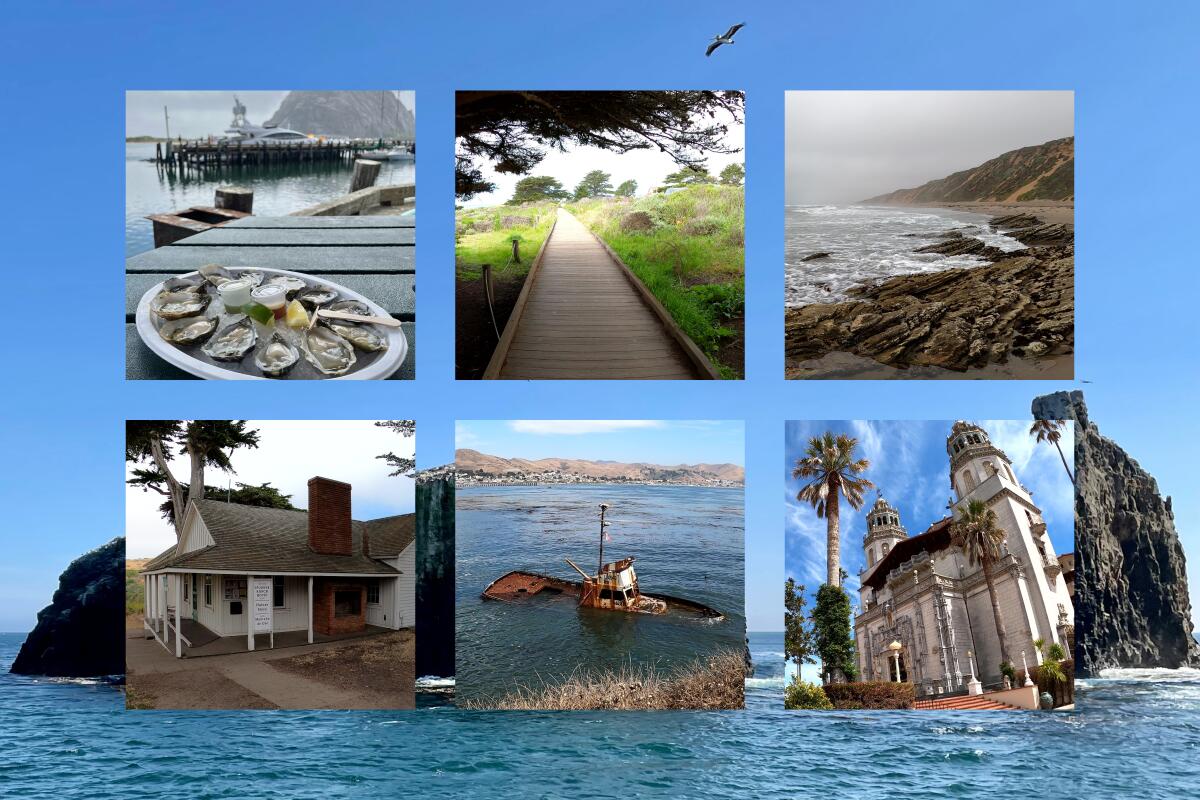
12 glorious spots to take in the crisp 70-degree air on a Central Coast road trip
- Share via
Has it been hot enough for you? The dire headlines about climate change have never felt as real as it has this summer. Apart from worrying about the state of the world as global warming rapidly alters it, the other question you have to ask yourself is: Am I the type of person that would embrace the triple-digit temps and still go to Vegas for the weekend anyway? Or am I the kind to mitigate the discomfort of heat domes and the scorching sun by finding somewhere cooler?
Planning your weekend?
Stay up to date on the best things to do, see and eat in L.A.
Most reasonable people are probably in the latter group. The closest refuge for Southern Californians to find relief for a few days is the brisk Central Coast of California. And the closer you can get to the ocean there, the chillier it gets. In fact, the official website of Montaña De Oro State Park — located on a particularly breathtaking stretch of coast between Pismo Beach and Morro Bay — has this advisory for visitors: “During summer days, the area is often 30 degrees cooler than inland areas.”
“Dress in layers, especially near the ocean,” it continues. “As the water here is cooler than in Southern California, surfers generally wear wetsuits.”
On a recent August day where it ticked over 100 degrees in Southern California’s inland valleys, no one was going into the water at Spooner’s Cove, Montaña de Oro’s most popular beach. The weather was 61 degrees and overcast. It was actually too cold to swim. While people in L.A. sweat, here they wore sweaters.
There’s a scientific explanation for the cooler temps you feel as you move north. The colder ocean currents that run southward from Alaska along the West Coast make summer temperatures lower here compared with the East Coast. But there’s also something called upwelling, the upward movement of dense and cooler deep seawater to the ocean’s surface. The phenomenon doesn’t just result in a refreshing climate near the beaches, it also brings nutrient-rich sediment to the surface, which is vital to ocean life and coastal fisheries.
So go on up for an invigoratingly brisk weekend trip to the Central Coast. Give your air conditioner a break and eat great seafood along the way. This guide explores a cruise, short hikes, state parks, historical sites and seafood joints between Ventura and San Simeon that can be done in a two-day span with a drive from L.A. that’s shorter than Vegas.
For lodging, Lompoc is a good choice. The city isn’t just the halfway point on the route, the hotel rates here are often cheaper than at any other town you’ll pass through along the coast.
See marine mammals galore on a half-day Channel Islands cruise
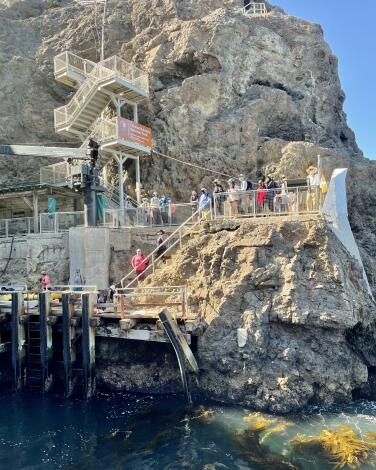
Island Packers, the only company that provides boat transport to the Channel Islands from Ventura or Oxnard, offers the 3 1/2-hour cruise on most days of the week. Check their website’s calendar for “1/2 Day Island Wildlife Cruise” to book either a morning or early afternoon departure. Make sure to note which port (either Ventura or Oxnard) your chosen cruise sails from.
Then get to the port, board the boat, take a seat on the open deck and feel the cool wind on your face. You’ll soon traverse the Santa Barbara Channel toward the chain of five islands, an area that Island Packers’ website cites as having “more marine mammals in its waters than any other area on the planet.”
For sure you’ll see seals and seabirds. If you’re lucky there will be dolphins and whales. But the highlight of the trip is the 40-foot-tall Arch Rock at Anacapa Island, an indelible landmark for the Channel Islands and a photo op that you can only get while onboard a cruise like this one. Bonus points if you get the lighthouse atop Anacapa in your shot.
Score a reservation at Brophy Bros. for a sit-down seafood dinner
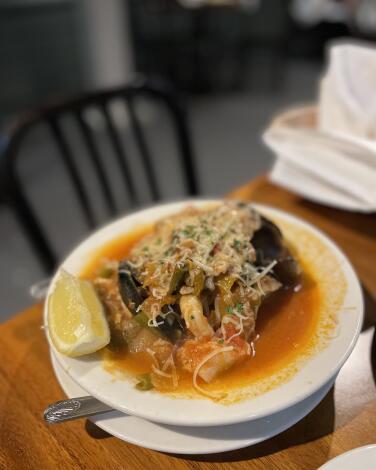
The success of that original restaurant meant expansion. At first, the Bennetts considered Los Angeles and San Francisco. They ultimately decided on Ventura Harbor for two reasons: its dockside vibe was nearly identical to its original location and staying local meant they could use the same vendors with which they had already established relationships in Santa Barbara.
Since its opening in 2007, the Ventura Brophy Bros. has itself become a landmark in its own right. Dinner ticks all the boxes of a great American seafood restaurant down to the elevated views of the harbor from its second-floor patio.
As it is very popular, reservations are essential. Grilled fish sandwiches and fish and chips exist on one end of the menu, hovering around $17. Sea bass and swordfish are featured on the higher end, with nothing priced past the $40 mark so far.
Ask a local and they’ll say any meal you have must include its award-winning clam chowder. But it could be argued that the cioppino, which retails below $25, is the real soup-er star. The dish is a generously portioned main course bowl of tomato-based fish stew overflowing with clams, mussels and shrimp offered at a price that couldn’t get you fish and chips at San Francisco’s Fisherman’s Wharf.
Line up at Santa Barbara Fish Market for live uni

If you happen to be in town early on a Saturday, you can try your luck at the city pier across from Brophy Bros. and buy them directly from diver Harry Liquornik, one of the many fishermen offering up their catch at the crack of dawn. But at any other time, a convenient option is to line up at Santa Barbara Fish Market, a longtime seafood purveyor at the harbor. They will shuck and prep the giant red sea urchin on an aluminum tray of ice at a cost of about $16 per uni.
Waits can be long, not just because of its popularity with tourists but also because the process of shucking the spiny creature is a lot harder than an oyster. On a busy weekend, the shop can go through upward of 200 unis.
Once you’ve scored your sea urchin (which will come in two halves), secure or share one of a few nearby picnic tables outside. Then take a plastic spoon to scrape the yellow, tongue-like lobes off from the inside walls of the shell. In each custardy scoop, you’ll taste the sweetness you’re used to, but also a metallic umami and the “merroir” of the cool Santa Barbara coastal waters.
Step back in time at La Purisima Mission Historic State Park
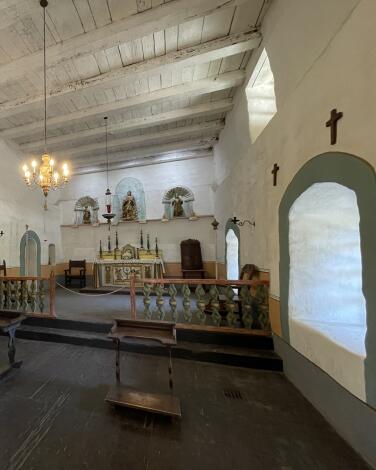
To stroll through the property is to time travel, but especially if you happen to visit during events held throughout the year when costumed docents demonstrate what mission life was like with crafts such as weaving, tortilla making and carpentry. Outside of those events, free guided tours (after a day-use parking fee of $6) are offered at 11 a.m. Wednesdays to Saturdays, and at 1 p.m. Saturday and Sunday by a California State Park ranger, so long as there’s one around to do it.
However since the park is usually understaffed, you’re most likely going to have to conduct your own walk-through of all the buildings and the grounds where horses and livestock roam. In the few hours you spend here learning about its history, what will resonate most will be the story of the Chumash, the Indigenous people who lived along the California coast before Europeans arrived.
Covered in some detail at a few exhibits, many Chumash at the mission died from exposure to European diseases, were forced into labor, and suffered mistreatment that ultimately culminated in an 1824 rebellion and its violent crackdown. History, as it turns out, is more complicated than those fourth grade California mission diorama projects made of popsicle sticks would have you believe.
Warm up with clam chowder at Splash Cafe
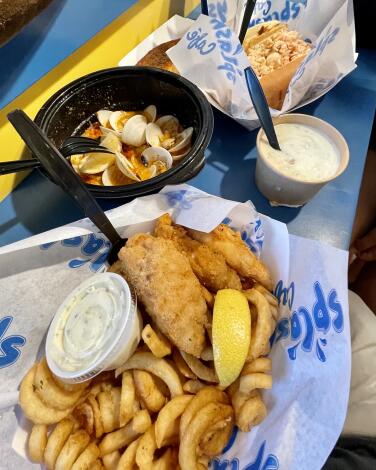
And it is a very good, if very thick clam chowder. You could opt for the extra carbs and get it in a hollowed out bread bowl. Or you could even add extra calories and cholesterol by saying you want it “fully loaded.” Doing so tops the soup with more clams, seafood, green onions, bacon, and cheese as though it were a baked potato.
But the rich, full-bodied chowder doesn’t need much embellishment. Only a few oyster crackers are needed for some textural contrast to the creamy, savory sludge. For the rest of your meal, skip the fish and chips in favor of whatever is the daily special. The best happens on the weekend when the restaurant discounts a generously portioned, mayo-dressed lobster roll that’s almost as good as the clam chowder in its New England-ness.
Step into history at the Spooner Ranch House in Montaña de Oro State Park
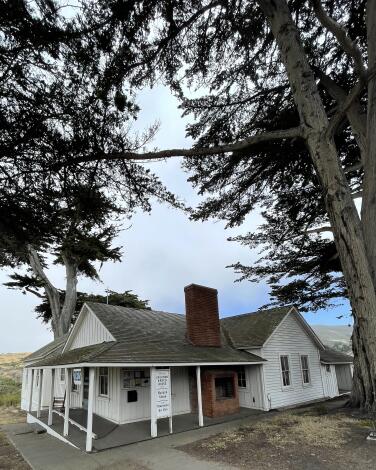
What remains of his property today is the ranch house, which has been restored and furnished. As it functions as the official visitor center for the park, the front of the building is a nature store and gift shop. The rest of the house is a three-dimensional history book that preserves the stories of not only the Spooner family but also the Japanese American farmers who leased land from them but were incarcerated during World War II.
One of the most interesting parts of the home is its so-called “California cooler,” a special cabinet built between the wall of the dining room and the exterior of the house. The vents from the exterior side allow for the cool coastal air to circulate inside the cabinet, keeping perishables like fruits cold and fresh — a clue as to how brisk the climate at Montaña de Oro is.
Admission to the ranch house and to the park is free.
Explore tide pools full of anemones on Hazard Reef Trail in Montaña de Oro State Park
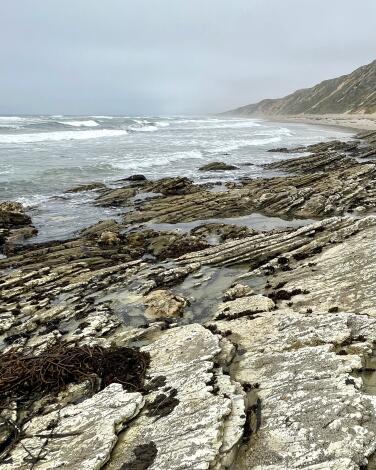
A brush fire in 1947 claimed most of Hazard’s buildings. But even after his property eventually became part of Montaña de Oro State Park, his non-native eucalyptus groves remained, now proliferating into forests. Those trees, the eponymous canyon and this trail endure as Hazard’s legacy.
And the trail that bears his name is lovely. It’s an easy 0.8-mile out-and-back hike that starts at the free dirt parking lot (which is marked as “Trailhead Parking” on Google Maps nearest to Hazard Canyon). It leads you through lush vegetation, a boardwalk, and the gradual slope of a wooden stairway to the beach where you’ll find tide pools full of anemones and crabs. Though the hike is leisurely, bringing a hiking stick can help with your footing through a section of the boardwalk where a few slats have dislodged into the wet mud.
Stop for raw and baked oysters at Grassy Bar Oyster Company in Morro Bay
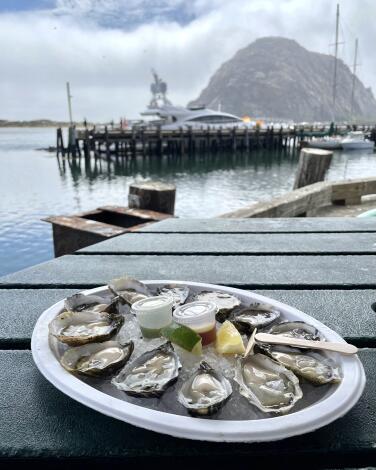
Out of the two, Morro Bay Oyster Company’s opening hours are hard to pin down. Grassy Bar Oyster Company’s store hours, on the other hand, you can set your watch to. It’s open to the public Thursday to Sunday from noon until 5 p.m.
Owned and operated by the Trevelyan family, Grassy Bar Oyster Company started cultivating its oysters in 2009 in Morro Bay’s intertidal zone. Fed by the seawater that ebb and flow into and out of the bay, their oysters are briny with the fresh flavor of cucumber and just a hint of minerality.
Although you can enjoy Grassy Bar’s oysters at a number of fine seafood restaurants at the Embarcadero just steps away, that would be a mistake. Not only is Grassy Bar selling its freshest oysters fully shucked and prepped over ice with lemon and sauces, it’s usually a few bucks cheaper. $30 will get you a dozen. And when you slurp them at the nearby picnic tables that overlook the bay and Morro Rock, you’re also guaranteed a meal with a view.
If it’s baked oysters you’re after, Grassy Bar also has you covered. Sold by the half-dozen and broiled with a crisp panko and Parmesan crust for $24, its rendition rivals any restaurant’s.
Get a glimpse of the Point Estero shipwreck in Estero Bluffs State Park
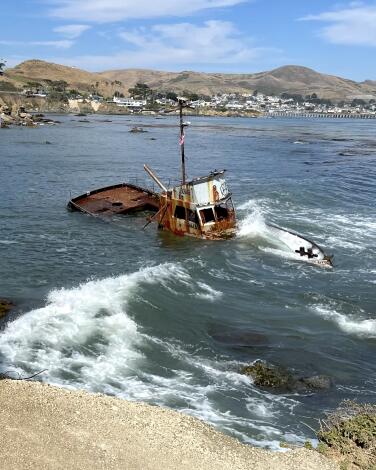
To this day, its rusting hulk sits there abandoned but not forgotten. If you Google “Estero Bluffs State Park,” the wreck has become a popular spot for photos and an inadvertent landmark for a protected area that most drivers would otherwise miss as they speed by on Highway 1 toward Morro Bay.
To see the shipwreck, park in the hidden but free lot on North Ocean Avenue located immediately at the Highway 1 turnoff. Then hike the 0.1 mile dirt trail farthest from the parking lot entrance. It will lead you to a bluff that overlooks its current resting place. At low tide, you can scramble down to the beach to get closer and risk tetanus, that is, until some agency ponies up the cash to get rid of the boat or nature does it, whichever comes first.
Amble along Moonstone Beach Boardwalk in Cambria
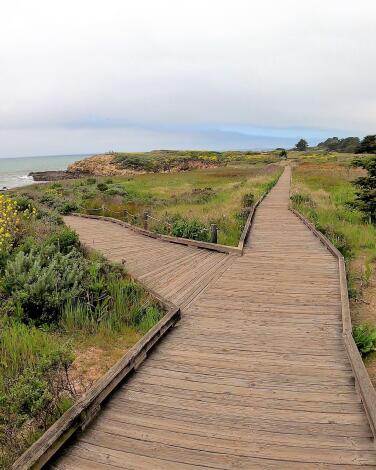
As it is a very popular stretch and accessible to wheelchairs and pets, parking along Moonstone Beach Drive, which it parallels, can sometimes be a challenge during busy seasons. Near the southern end of the boardwalk, you can try your luck at the free parking lot at Santa Rosa Creek. The lot also has a public restroom. From here you can start walking north.
But you don’t have to cover the entire boardwalk to enjoy its charms. At some spots there are decks to gaze out at the waves and the ocean beyond. One at the midpoint labeled as “Seal View Beach Deck” on Google Maps has stairs that access the beach below and tide pools full of critters.
Gawk at the grandeur of the Hearst Castle
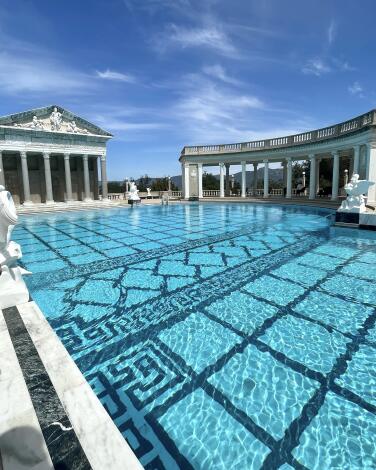
At least a dozen different tour options of the estate are now offered by California State Parks. Some tours are more expensive than others, and at least one allows you to visit at night. But for first timers, the $30 per person Grand Rooms Tour, which includes the famous Neptune Pool, provides a good overview. The main building, called Casa Grande, houses the Assembly Room, Refectory, Morning Room, Billiard Room and Theater, where a vintage movie of its heyday is shown. The tour concludes at the indoor Roman Pool whose gold tiles aren’t just gold-colored, they’re actual gold.
Throughout the 70-minute history lesson, the passionate guides give a lot of color and context as they share trivia while you stroll and gawk at the opulence. But the trivia-sharing appropriately starts with the late Alex Trebek, whose recorded voice narrates the bus ride that takes guests from the visitor center up the hill to the mist-covered estate and eventually, back down to reality.
See (and smell) the blubbery inhabitants of the Piedras Blancas Elephant Seal Rookery
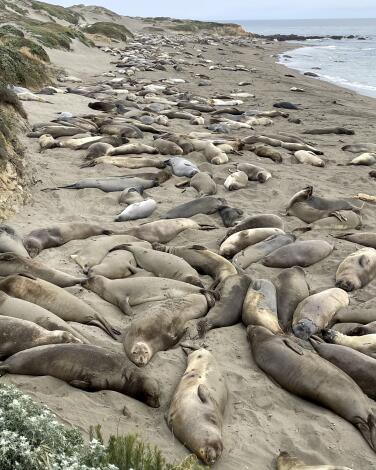
A boardwalk built by the California Conservation Corp. in 1997 also keeps visitors and the seals at a safe distance from one another. From the elevated platform, you can get a good overhead view of the colony and it’s still close enough to get a whiff of their odor and what they had for lunch.
The northern elephant seal is the second-largest seal in the world, with some males weighing up to 5,000 pounds. Late January, April and October see the most seals, with their blubbery bodies covering nearly every square inch of sand as though it were Copacabana Beach during Carnival. But come any time of year and there will always be a good crowd of them bellowing, wrestling and doing elephant seal things while you learn about the species through informative signs placed along the walkway.



